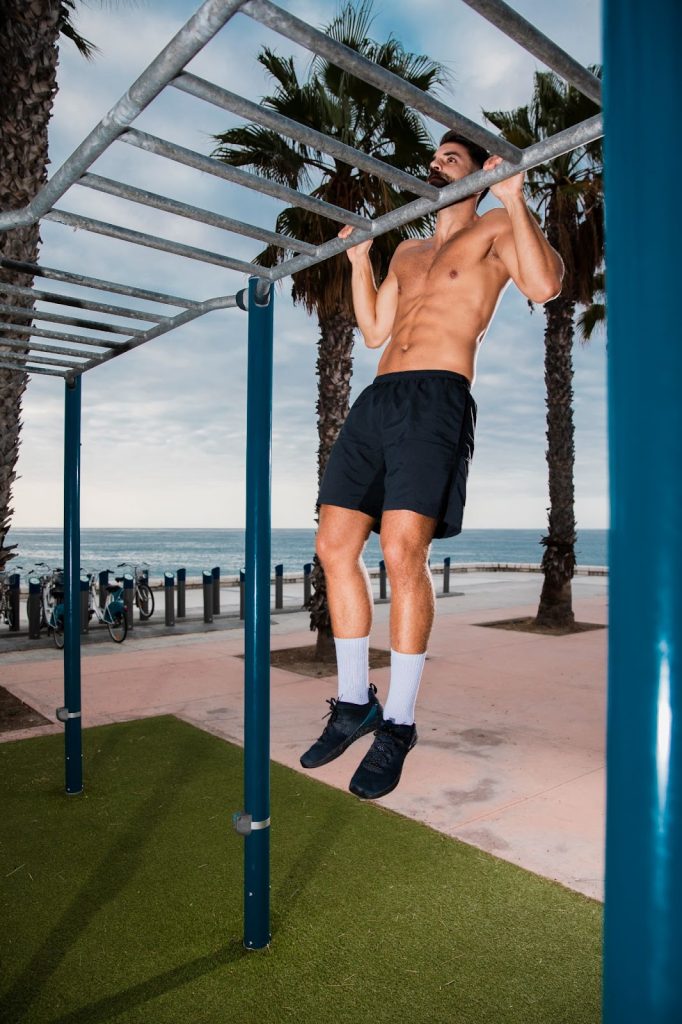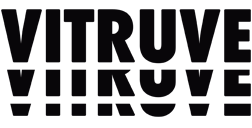10 de April de 2025
Chin-Ups: Exercise Guide, Tips, and Benefits
Chin-ups are a powerful bodyweight exercise performed on a pull-up bar, featuring an underhand (supinated) grip. They are a mainstay in many strength and conditioning routines, helping to develop upper-body pulling power, bicep strength, and core stability—all without needing extensive equipment. Below, you’ll learn how to execute chin-ups with proper form, common mistakes to avoid, and ways to track your performance using Velocity Based Training (VBT).
What Are Chin-Ups?
Chin-ups differ from pull-ups by the direction of your palms. In chin-ups, your palms face you (supinated grip), generally increasing biceps activation and making the movement feel slightly different—if not easier—for some compared to overhand (pronated) pull-ups. Regardless of preference, chin-ups are an effective way to target the upper back, arms, and core in a single move.
How to Perform Chin-Ups Properly

- Grip the Bar
Stand on a box or bench if needed. Grab the bar with palms facing you, hands around shoulder-width apart. - Engage Your Core
Brace your abs and glutes to stabilize your body and reduce swinging. - Pull Up
Drive your elbows down and back as you pull your chest toward the bar. Aim to get your chin fully above the bar. - Lower Under Control
Slowly reverse the motion, maintaining tension in your arms and back. Avoid dropping quickly, which can strain your shoulders. - Repeat or Rest
Once you return to a full hang, continue for more reps or take a short break if you’ve reached muscle fatigue.
Common Mistakes to Avoid
- Using Excessive Momentum: Kicking your legs or jerking your torso dilutes muscle engagement.
- Partial Range of Motion: Strive for full extension at the bottom and chin-over-bar at the top for best results.
- Flaring Elbows: Keep elbows close to your body to maintain proper form and shoulder safety.
- Neglecting Core Stability: Engage your abs and glutes to keep your body rigid and prevent swaying.
Variations of Chin-Ups
- Assisted Chin-Ups: Use a resistance band or assisted pull-up machine to lighten the load if you’re still building strength.
- Weighted Chin-Ups: Add a dip belt or hold a dumbbell between your feet to increase intensity.
- Negative (Eccentric) Chin-Ups: Focus on the lowering phase to build control and grip strength.
- Mixed-Grip: Experiment with one hand pronated, the other supinated, to address muscular imbalances.

Track Your Chin-Ups with Velocity Based Training
Although chin-ups are a bodyweight exercise, you can still apply Velocity Based Training (VBT) principles to optimize performance:
- Weighted Progressions: Attach a dip belt with added weight. A device can measure bar speed, helping you gauge power output.
- Time Under Tension: Some VBT systems track the speed of each repetition, revealing when you’re slowing down due to fatigue.
- Controlled Descents: Monitoring how quickly (or slowly) you perform the negative portion encourages consistent technique and muscle engagement.
Using a VBT device allows you to detect strength plateaus or fatigue early on, ensuring safe and gradual progression.
Tips for Incorporating Chin-Ups
- Frequency: Two to three times per week can help build pulling strength and muscular endurance.
- Warm-Up: Loosen shoulders, wrists, and elbows with dynamic stretches before attempting heavy or high-volume sets.
- Pairing: Combine chin-ups with rows, presses, and leg exercises to create a balanced strength and conditioning program.
- Progression: If you’re new, start with assisted or eccentric chin-ups. Increase resistance or reps once you consistently hit multiple clean reps with good form.
FAQs About Chin-Ups
Are chin-ups better than pull-ups?
Neither is strictly “better”; they simply target muscles slightly differently. Chin-ups emphasize biceps more, while pull-ups engage the back and shoulders more intensely. Including both in your routine can yield well-rounded upper-body development.
Do chin-ups give you a V shape?
Chin-ups strengthen the lats and contribute to a broader back and shoulders, which can enhance a “V-taper” appearance. Combined with a balanced diet and overall training plan, they can certainly help shape your upper body.
How many sets of chin-ups are enough?
Beginners might start with 2–3 sets of as many reps as possible with proper form. As you get stronger, adding additional sets or progressing to weighted chin-ups can support continued growth and strength gains.
By mastering proper technique, embracing progressive challenges, and leveraging the insights of velocity monitoring, chin-ups can significantly improve your pulling power, bicep strength, and core stability. Add them to your routine for an accessible yet highly effective upper-body exercise that promotes long-term progress and strength gains.
